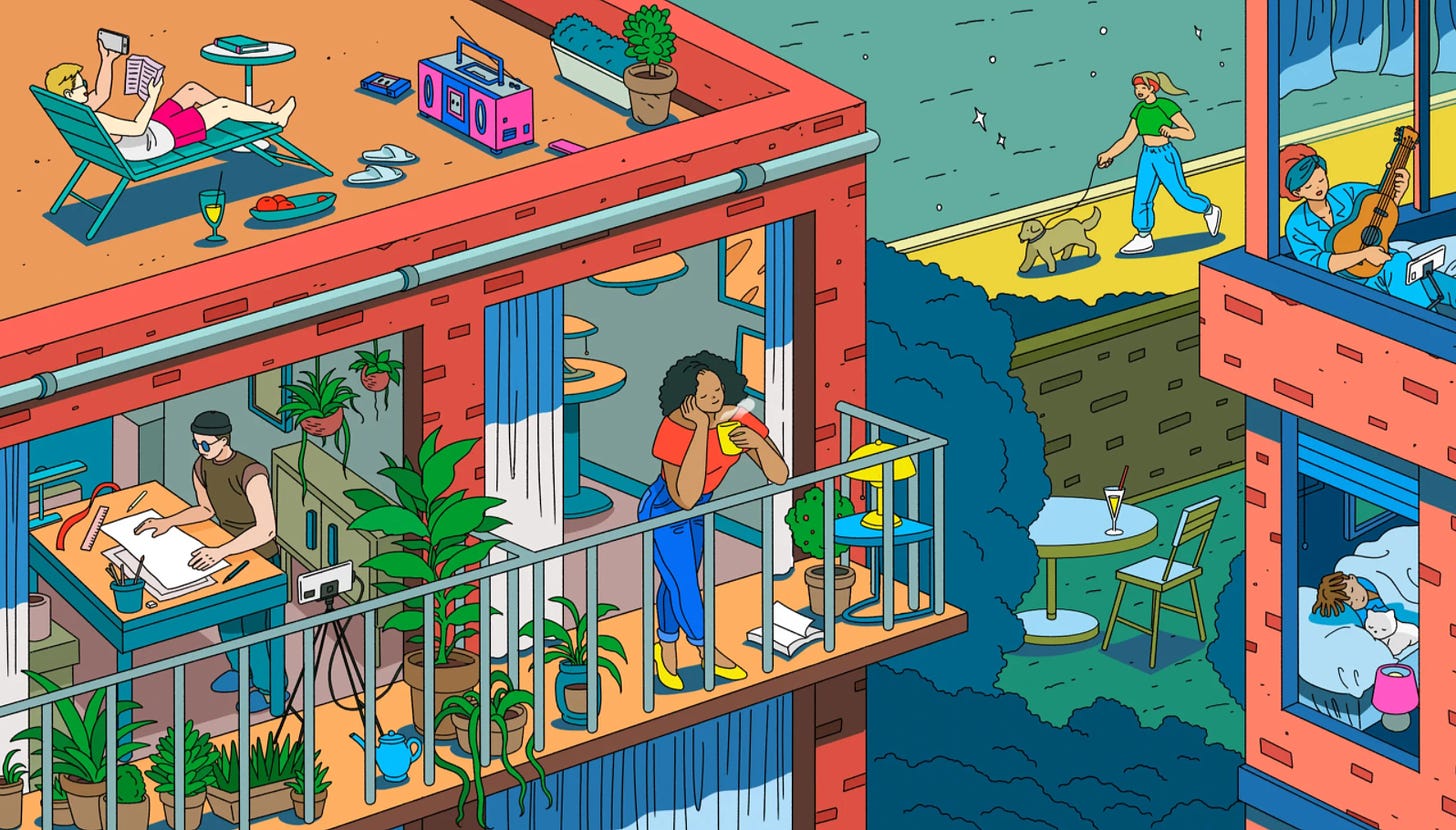This morning, The New Yorker published my latest essay, which is titled “TikTok and the Vibes Revival” but in my head will always be “Notes on Vibe,” from Susan Sontag’s famous essay “Notes on Camp,” which is a ruthless dissection of a particular cultural phenomenon or label. To me, “vibes” are little bits of audiovisual poetry that we experience in the world, and they seem to have found a perfect home on TikTok.
Notes on Vibe — The New Yorker
Most often, my essays start as persistent feelings that I have in daily life — something that I keep noticing but can’t quite figure out. My brain picks up a theme, like a melody stuck in your head, and it sticks around until I’ve written through it. This essay definitely happened that way: I was getting a particular style of TikTok videos in my For You feed, short glimpses of mundane life moments that were somehow beautiful, often hashtagged #vibes. And I kept hearing friends (and myself) use the word vibe or vibes all the time, to refer to just about everything — it seemed to be a convenient label for anything that can’t quite be grasped.
So I began thinking about this essay to figure out why vibes were so prevalent, and why I appreciated those banal TikToks so much, the stream of ephemera, light through windows, coffee cups, piles of books. They are kind of an update on the cliche Instagram lifestyle tableau, but they’re more natural, more immersive. You can see your own life through their lens more easily, appreciating the vibes. I looked into the history of the word “vibe” and the philosophers who have taken the idea on. But my favorite parts of the essay are just describing specific vibes, like the man swimming in his Manchester lap pool to Frank Ocean, or a woman making matcha on her wooden countertop. Vibes are for everyone. Maybe this is the key paragraph:
In the social-media era, though, “vibe” has come to mean something more like a moment of audiovisual eloquence, a “sympathetic resonance” between a person and her environment, as Robin James, a professor of philosophy at U.N.C. Charlotte wrote in a recent newsletter. What a haiku is to language, a vibe is to sensory perception: a concise assemblage of image, sound, and movement. (#Aesthetic is sometimes used to mark vibes, but that term is predominantly visual.) A vibe can be positive, negative, beautiful, ugly, or just unique. It can even become a quality in itself: if something is vibey, it gives off an intense vibe or is particularly amenable to vibes. Vibes are a medium for feeling, the kind of abstract understanding that comes before words put a name to experience. That pre-linguistic quality makes them well suited to a social-media landscape that is increasingly prioritizing audio, video, and images over text. Through our screens, vibes are being constantly emitted and received.
Again, here’s my Notes on Vibe in The New Yorker. Let me know what you think!




I enjoyed all the levels and schools of vibe you packed into the piece. I know that you know that vibes go even deeper than the abstract understanding that comes before the experience -- vibes are all there is and certain vibratory combos persist long enough for us to consider them real and solid.
What really stuck with me is the explicit acknowledgment of vibe as a "pre-linguistic quality". I was struggling to verbalize why it is that we can all pick up on a vibe, relate to a vibe, and give off a vibe without really being able to put it into words. Your essay gave me concrete words to describe impressions I've been discussing with friends in media for a while, and I keep coming back to it for this reason. Thank you! Always a pleasure reading your work.